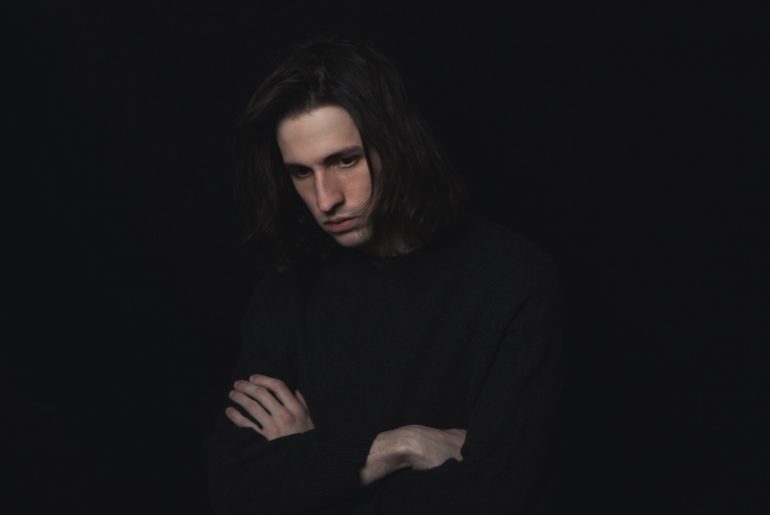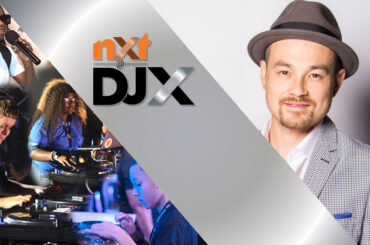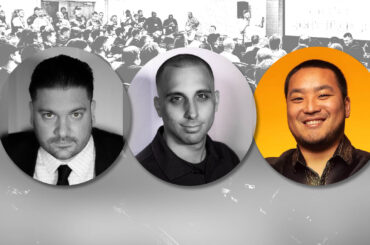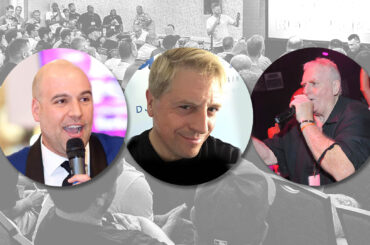It’s not too often that we see a North Carolina-based DJ/producer rise to stardom, but Porter Robinson certainly has done it. Not only has the Chapel Hill-based talent become a world-renowned electronic artist, but he’s also emerged as one of the most prominent influences among his peers.
Robinson began producing at the young age of 12 – his understanding of electronic music and studio fundamentals entirely self-taught. From the very beginning, Robinson was viewed as a prodigy, creating music that he called “Complextro,” a simple word he created to put on his MySpace page as somewhat of a joke. Little did he know, his unique ability to add classically inspired melodies and complicated fills would lead to him catching the ear of Skrillex, who, by 2011, was on his own, well-documented, career trajectory.
This connection would later lead to his fiery 11-track Spitfire EP being signed to Skrillex’s imprint OWSLA, officially solidifying Robinson as one of the most promising new talents throughout the electronic landscape.
In 2012, Robinson would go on to release his timeless, euphoric anthem, “Language.” He also co-wrote Zedd’s chart-topping hit “Clarity” and joined forces with fellow production prodigy Mat Zo for their collaborative single, “Easy.” Robinson had hit the electronic-music world’s big-time stage.
But, like many virtuosos, he quickly began to lose interest in the hit-driven, commercial-dance-music scene, and started to chafe at how formulaic electronic music was becoming. Consequently, he chose to go in a new direction following his “Language Tour.” Robinson began to create a full debut album, Worlds, with a complete live show to accompany it.
Fueled by his love for anime and Japanese culture, 2014’s Worlds served as a nostalgic journey using melodies that provoked true emotion. As for his live show, his “Worlds Tour” featured Robinson singing, playing synthesizers, and triggering samples. The authentic beauty from both the album and live performance would lead to Robinson attracting an uber-fanbase across the globe.
In 2016, Robinson would join forces with longtime friend and like-minded producer Madeon for “Shelter.” That quirky single was a very pleasant surprise to most and it was accompanied by an international “Shelter Live Tour,” which included a performance with the French producer at Coachella 2017.
Afterward, Robinson went on a brief hiatus that lasted until this past October, when he took to social media revealing his mysterious new project, “Virtual Self.” With “EON BREAK” as the debut release from the alter-ego project, the majestic/frenetic tune marked a scintillating new chapter for Robinson, one that’s unlike anything he’s ever pursued.
Only sharing 3-D art and cryptic messages after the initial October announcement, Robinson saw his fanbase and, indeed, the entire electronic community begin to buzz about Virtual Self. He would go on to release a second single, “Ghost Voices,” a glistening groover that Robinson categorized as “Neotrance.” Then in late November, the five-track Virtual Self EP surfaced. Next, he unveiled Virtual Self live, with a smashing performance at a Brooklyn warehouse a week later.
Even after the Virtual Self project’s debut performance, the electronic music world was left with questions as to what it all means and why it started… until now. In this DJ Times exclusive, Porter Robinson for the first time opens up about Virtual Self and the inspiration behind this enigmatic project.
DJ Times: Back in October, you unveiled your newest project, Virtual Self, seemingly out of nowhere. When did you know it was time to reveal your new alias to the world?
Porter Robinson: I had been spending years obsessing over every element of it – the music, visual style, presentation, website, characters – and I wanted to present it in a way that was complete, and with virtually zero context. It was critical for me not to hold peoples’ hands when it was released. I wanted discovering Virtual Self to feel like you stumbled into this other world that has always existed. I’m happy to talk about it now, but at first, I wanted to convey the feeling… “Where the fuck did this come from, and why?”
DJ Times: When would you say Virtual Self was born?
Robinson: In 2015, at the height of my depression. I was writing music that sought to be kind of like a follow-up to Worlds, but it just wasn’t as good, and I knew it. It wasn’t coming from a real place back then. I think I’m at my best when I’m rebelling against something. When I wrote Worlds, it was because I was really sick of the EDM sound at the time. Virtual Self felt like me reacting against the pressures and expectations that I placed on myself after that first album. Once I started diving into compiling mood boards of the visual art style I wanted, and accumulating a set of sounds that gave me that Y2K vibe, it was like the dam broke, and writing music just flowed out of me.
DJ Times: What is the true inspiration behind this project? It seems to be reminiscent of late ’90s and early 2000s electronic-dance music.
Robinson: Virtual Self is like me trying to paint a picture… my fuzzy, nostalgic, unclear memories of Y2K dance music like trance, hardcore, and ’90s jungle. I wanted to intentionally conflate everything and cross styles in a way that wasn’t necessarily authentic to the era – it’s never quite trance, it’s never quite hardcore, and, although it possesses some jungly elements, it’s never quite jungle/drum-n-bass.
DJ Times: How’s that?
Robinson: Like, I remember when I was told by people in the drum-n-bass scene that the jungle and d-n-b world took it as a point of pride to resist trance influences. But for me, when I was 10-years old and hearing electronic music in video games, I didn’t make those genre distinctions. I couldn’t have explained the difference between jungle and the Y2K trance I was hearing at the time. It was all the same to me, and I loved it.
DJ Times: How did that translate to this project?
Robinson: So, when I was working on this project, I realized that I wanted Virtual Self to exist in this weird limbo between the genres of the time. That’s how I remember this music – as an outsider – and as a little kid, I received all these disparate styles of electronic music in a singular package. So now as an adult, I wanted to recreate that feeling with Virtual Self.
DJ Times: Was there any type of rave culture in North Carolina growing up?
Robinson: I still don’t really think I’m in the rave scene, and I was never able to attend electronic music shows as a kid. I experienced electronic music through rhythm games, Kazaa, DI.fm, and Ishkur’s Guide to Electronic Music. My mission statement with Virtual Self is not to say anything like, “2000-2003 was the real rave, this particular time period is the truth” or anything like that. For one, I wasn’t there – I was 10-years old, illegally downloading electronic music on a barely post-dial-up connection. Instead, it’s more like… “There’s this art style and musical style that I have these blurry, but joyful memories of, and I never fully experienced it. But this is how I remember it.”
DJ Times: Back in December, Virtual Self’s first live performance debuted at a warehouse in the industrial side of Brooklyn. Is this the type of environment we can expect for Virtual Self performances going forward? Out of all venues across the globe, why Brooklyn for the debut?
Robinson: It was critical for at least the first show to have the right ambience. I just didn’t like the idea of doing Virtual Self in a hard-ticket rock venue, or in a theatre, and a club wouldn’t have fit the kind of lighting I wanted. I just really, really felt that it needed to be a warehouse.
DJ Times: You chose DV-i and Raito as support for that show, why?
Robinson: They’re both incredible, for one! But the thing that was most critical for me was maintaining the purity of the vibe and aesthetic throughout the night from start to finish. The idea of anyone playing, for example, trap or future bass or anything really 2017 at the show felt really wrong. So, I started digging to find out who could play and could maintain the vibe, while still completely doing their own thing.
DJ Times: Can you give our readers an idea of their stories?
Robinson: For the uninitiated, DV-i is a Brooklyn artist who releases on Maltine Records, a Japanese netlabel, and he makes this insanely effortful, amazing stuff – sort of visual novel/RPG/PS1 music with hyper breakbeats and late ’90s Roland ROMpler synth work. It’s really amazing. And Raito makes rave-influenced techno and breaks. Definitely listen to his tune “Take Me” from his alias Otira.
DJ Times: The Brooklyn event was titled “Utopia.” Any significance to that?
Robinson: “Utopia” was a word that came up a lot when I was coming up with song titles and the sort of decorative, atmospheric text that you see a lot in Virtual Self visual art.
DJ Times: The lighting production for that event was next level. Would you say that’s as vital a part of the overall project as the music?
Robinson: Absolutely – I really hate the idea of any potential source of stimulus being unused. That’s why I obsess so much over lighting, video, cover art, and music videos. I really want the experience to be firing on all cylinders. I really want to drown people in the look and feel of any given project.
DJ Times: No genres seem to be off-limits when it comes to a Virtual Self set. Can you tell us a little bit about your track-selection process?
Robinson: As I said earlier, I’m trying to recreate this vibe I have in my memory where all of the tropes and clichés of the early 2000s – within a certain vibe – are being expressed all at once. But this is quite difficult, as most of the music you find from that time period is essentially one genre or another. So I spent a lot of time obsessively searching. I dedicated myself to listening to – at least scrubbing through – every single trance song released from 1999-2003, according to Beatport’s release dates. I did something similar looking for techno, breaks, and jungle. I’m certain I scrubbed at least 40,000 songs over the last two years. I was trying to give myself a huge toolkit of stuff to search from.
DJ Times: That’s a lotta material…
Robinson: In pursuit of that goal of conflating a bunch of tropes together, I spent a lot of time editing. I’d take an actual old-school trance breakdown and, at the expected moment of climax, switch it into a slowed-down “Amen Break.” It’s partially about subverting expectations, but it’s also about trying to combine unalike tropes in a Virtual Self kind of way.
DJ Times: But there are familiar tracks, right?
Robinson: In terms of more specifics about selections, I wanted a good balance. I wanted to play mostly music that people don’t recognize, but that feels distinctly Virtual Self, with the occasional well-known classic sprinkled in. I certainly wanted people to hear the show and wonder how much of it was authentically from that time period, and how much of it was made by Virtual Self. Finally, I didn’t want there to be any sense of irony or satire. I didn’t want to play cheeky, old, dance hits or anything that could be taken as ironic.
DJ Times: What were your final thoughts following the debut performance?
Porter Robinson: I was so happy.
DJ Times: You’ve announced there will be no Virtual Self music at Porter shows and vice versa. Why did you choose to go this route?
Robinson: I just really want to maintain the purity of the atmosphere of both projects. For Virtual Self, I obsessed incessantly for years on end trying to maximize a certain kind of aesthetic – that’s captured by the sounds used in the song, the style of chords, the production style, the look of the visual art, the look of the videos, even the vibe of the fonts used in the designs, needing to ensure that it’s all absolutely right and as Virtual Self as possible. I want a Virtual Self show to be the most Virtual Self experience you can possibly have, you know? Same with the Porter shows. I’m interested in immersion above all else. I want people to get to feel like they’re living in a different world. Anything that breaks that immersion is something I don’t want.
DJ Times: The Virtual Self EP featured five tracks and introduced the world to two characters. Who are technic-Angel and Pathselector?
Robinson: They’re the “producers” – Technica wrote “Eon Break,” “Particle Arts,” and “Key,” and Pathselector wrote “Ghost Voices” and “A.I.ngel (Become God).” I get the sense that Technica’s more about exploring the uptempo and happier stuff with hardcore and jungle and cybertrance influences, where Pathselector is more about breaks, dark trance, garage, and 2step. You can really hear it in the music.
DJ Times: “Ghost Voices” became an immediate favorite, not only among your fans, but your peers.
Robinson: I was really surprised by how many DJs picked that up. It’s been like four years since I made music that DJs would really be interested in playing, so I didn’t even think to expect it. It definitely makes me happy.
DJ Times: Many seem to believe that this year more DJ/producers are creating the music that they actually want to make, rather than playing it safe and making music they think the audience wants to hear. Would you say this is part of the inspiration behind Virtual Self?
Robinson: I really hope that happens. I love electronic music so much, and I think it’s at its healthiest when people are innovating and aren’t trying to intentionally write hits. My hope is that people will make music for themselves, dive into lesser-known influences that they love deeply, and try to share as much passion and excitement as they possibly can.







